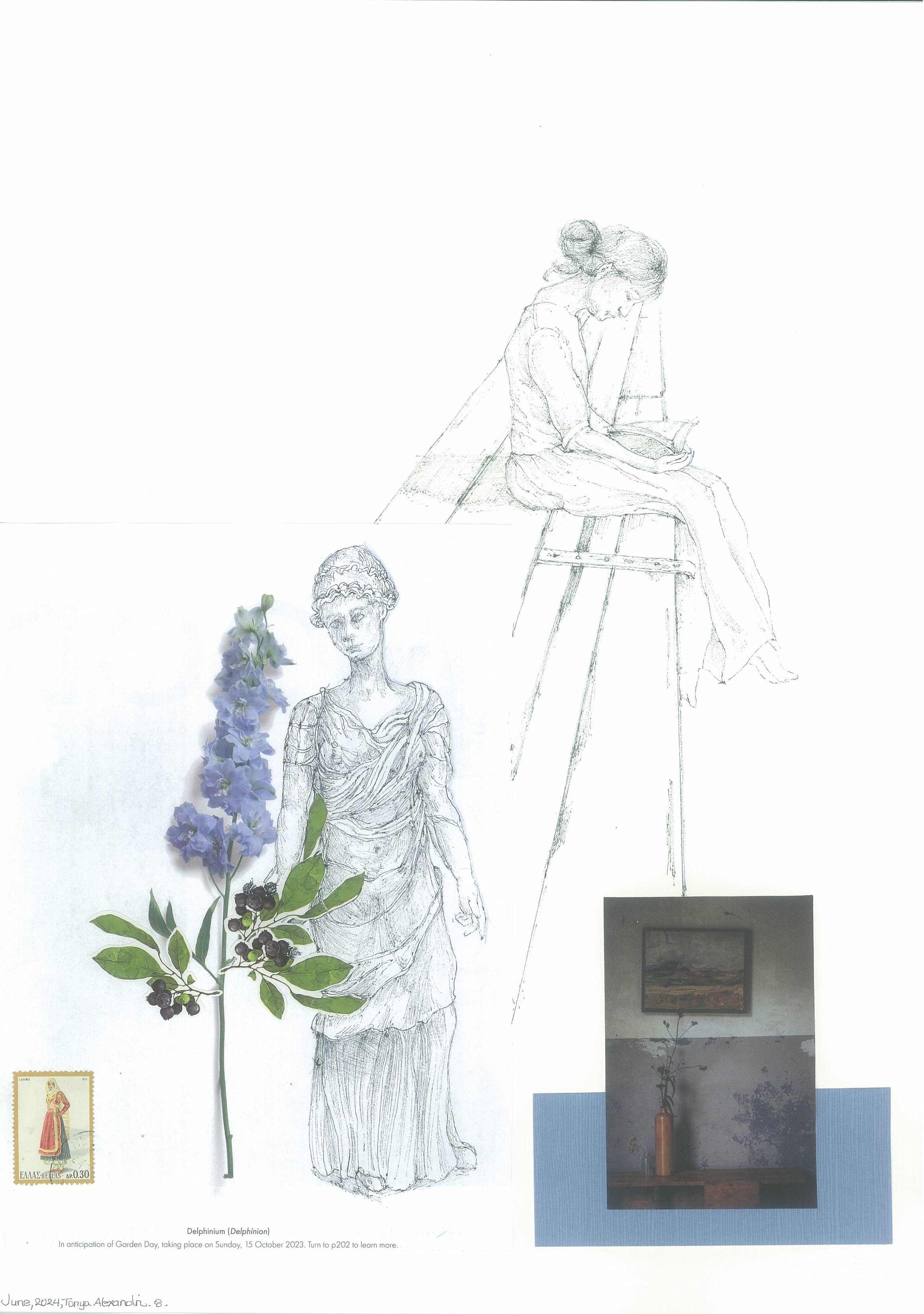Postcards The English translation has been completed
“People are trapped in history and history is trapped in them.” James Baldwin
“The present rearranges the past. We never tell the story whole because a life isn’t a story; it’s a whole Milky Way of events and we are forever picking out constellations from it to fit who and where we are.” From The Faraway Nearby Rebecca Solnit

Today’s post includes references to and suggestions for two books I’ve been reading, an article on how some of Hans Christian Andersen’s19th century fairy tales raised environmental concerns during an age of rapid industrialization, and nine drawing-collage pieces I’ve made recently.
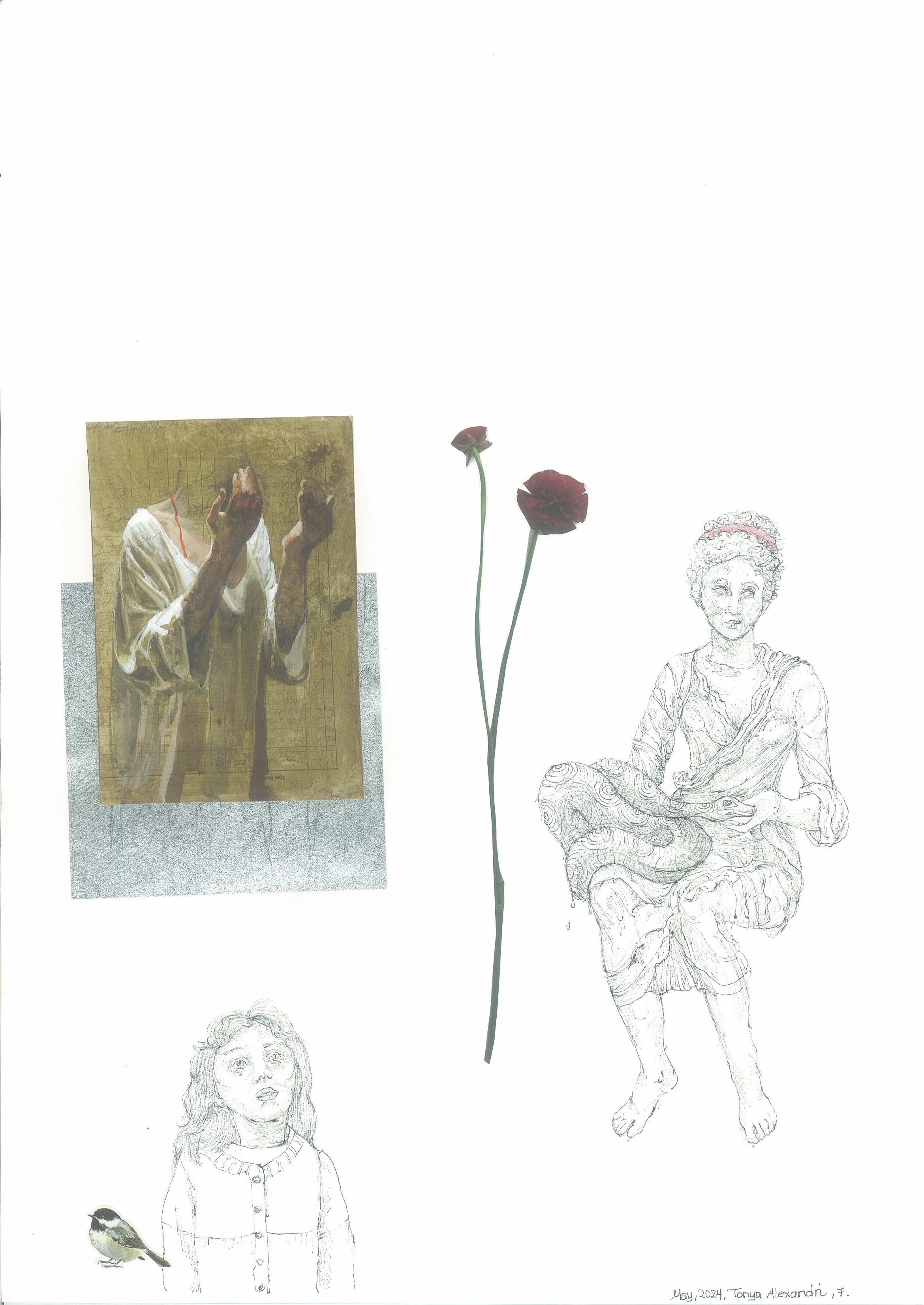
A. The first book, A History of Art In 21 Cats by Nia Gould. The Greek edition, that I purchased was published in 2023. This book introduces us to 21 art movements through illustrated cats, each cultured in the style of a particular period or art master. We travel from ancient Egyptian and Byzantine art to The Renaissance. We are introduced to Rococo, Impressionism, Surrealism, Fauvism, Cubism, Symbolism, Magic Realism, Art Deco, Abstract and Pop Art, The Cobra Group and The Young British Artists, and more. Gould has combined her love for cats and art to create a book featuring cats posing as famous artists and figures in famous works of art. The book is both for adults and children, and I think it would be a great tool to introduce key themes and artists of the various art movements to older school children. It could serve as a workbook of sorts, where students could use animals, objects and human figures to experiment with each style. The book will probably also delight cat lovers.
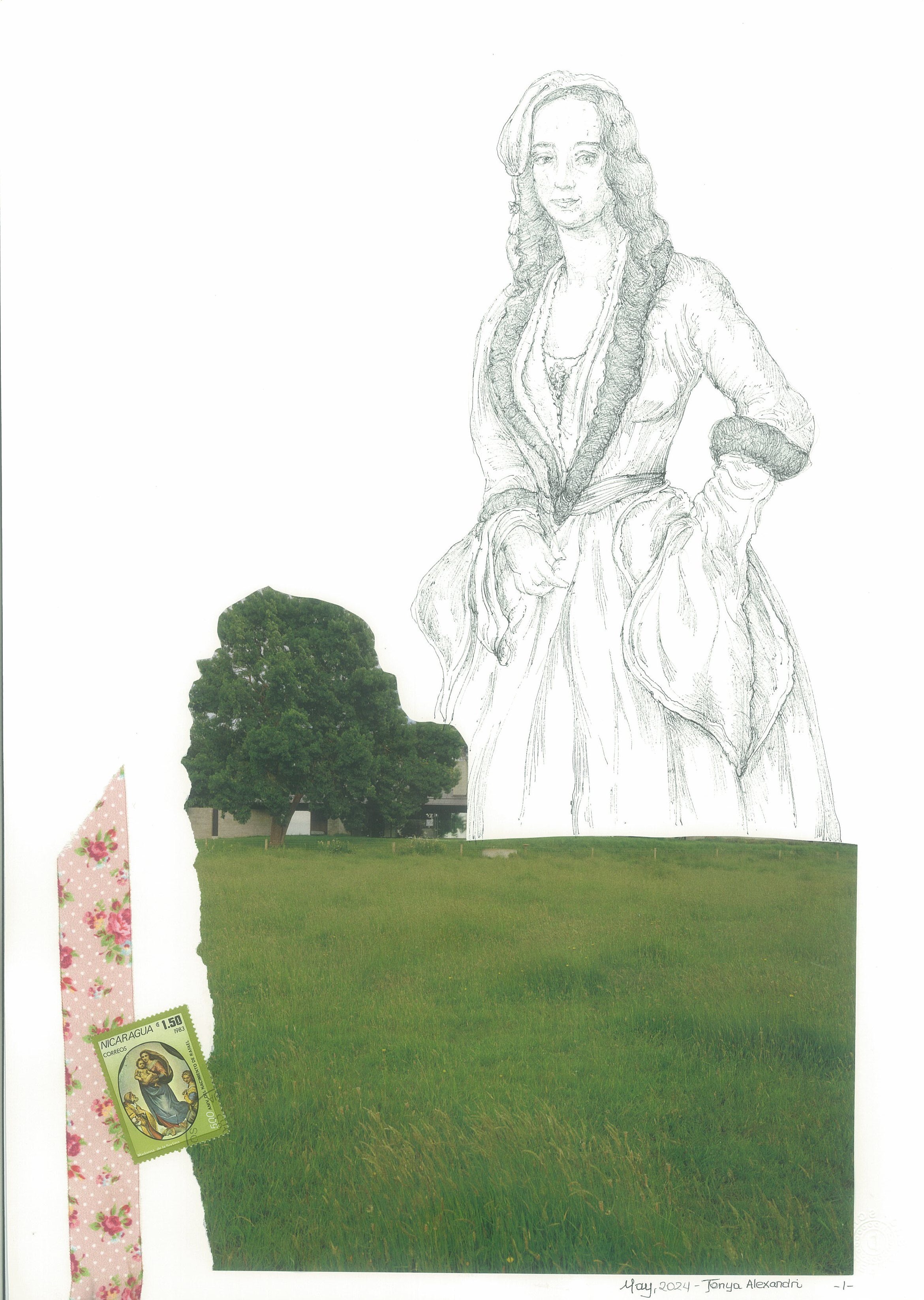
B. The second book O Κήπος της Αμαλίας / Amalia’s Garden, written by Karolina Mermiga and published in 2023, is very different. It is a historical novel about the life of the first queen of Greece, Amalia, intertwined with the events of the first decades of the independent Greek state, from 1837, when the nineteen-year-old German queen arrives in Athens as the wife of the also young Otto, till 1862, when the royal couple is forced to leave Greece.
As I reflected on the two languages in which I live and communicate, it occurred to me that I have not spoken English since 2011. On the other hand I listen to, write in and read English almost every day. And while I communicate orally in Greek, I read much less now, and I write very little if I exclude the frequent translations of the texts I write for this website. This situation is not the result of choice. It’s just the way things are now. But in a way, both are losses. So with these thoughts on my mind I decided, perhaps as a sort of return. to start watching Greek shows and podcasts on art and books. And that’s how I came across this book.
So among the things I watched and listened to was a presentation of Karolina Mermiga’s book. I chose the book for several reasons. In general, the historical novel is more enjoyable and faster to read than history books. Also, the title conjured personal associations. My mother’s name was Amalia and she always had a small garden in the flats and houses she lived in. She also planted the first flowers in my own garden. I also remembered that when I was little I once asked her why she didn’t have a name day like most people I knew. She told me that she probably got her name from a queen who lived in Greece a long time ago and bore that name. Much later, in high school, I first came into contact with the history of Modern Greece and the reign of Otto.
Mermiga, taps into historical events and facts as she weaves the story of a woman charged with the duty of giving birth to an heir in order to start a new royal dynasty. But Otto and Amalia were not destined to become parents. Their childlessness, and especially Amalia’s reproductive capacity, and the truths, speculations, superstitions and beliefs surrounding this issue, will become a socio-political issue, and part of a game played by the great powers: England, France and Russia. As I was looking at various articles somewhere it is mentioned that many took part in this game, from Metternich and advisors and courtiers to court doctors and those who advised that the queen ingest things such as cicadas or gunpowder from the king’s guns. Everyone expected a successor baptized in the Orthodox faith to establish the throne in Greece with Orthodox descendants. “A crown prince acts as a hypnotic for revolutions, a royal newborn has the power to lull an entire nation” writes Zacharias Papantoniou (LIFO magazine).
The childlessness of the royal couple was surrounded by rumours, superstitions, press comments and caricature sketches, since the birth of an heir meant political stability. It was also one of many other events in their reign that eventually led to the rise of popular discontent with the monarchy, culminating in the intense anti-royal struggle that resulted in Otto’s abdication in 1862. In the book’s ear it is stated that Amalia “endures physical torture for her childlessness and resists insults, but she also resists the exciting new currents of democracy that are blowing all around her.
On the first page of the book the author includes a quote by James Baldwin: “People are trapped in History and History is trapped in them.” So Amalia lived as the time and her place within it dictated, The same applies to all of us, our capacity for self-determination, expression and agency are determined, limited or influenced for better or worse by many factors as I have often mentioned, as well as by the contexts in which we move in, but also from the larger framework, such as History. So just as our ancestral family history touches us in one way or another, History with a capital H also defines or influences our lives.
The echo of the events and the protagonists of history reaches us. In this case, many works of architecture, urban planning, fiscal policy, the character of the birth and development of the newly established state at the time, even attitudes and prejudices of the 19th century, touch us collectively as a nation and a country, but also each of us in discreet personal ways, even today . In 2011, one of Amalia’s legacies became a defining part of my own life.
From Amalia’s letters and other sources we know that she loved Greece, a country full of contradictions that was searching for its identity after the revolution of 1821 and the civil wars, even though when she arrived she saw a country she did not expect and a desolate and devastated Athens. She loved the people, the landscape and the climate. She loved horse riding and swimming, which she was often deprived of, as it was thought that they contributed to infertility. This love of hers was also expressed in projects she engaged with. Among other things, she left an important imprint on the collective memory of the Greeks, mainly with the “Amalia costume”: the urban costume of the Peloponnese that was also common in Athens, and which, as I learned, played an important role in the evolution of Greek costume history. But she was mainly interested in agriculture, importing plants and trees from other places, beautifying Athens by planting trees in squares, hills and sidewalks of the capital, where she also created her famous garden, now known as the National Garden. She also developed charitable activity. It was through her efforts that the then pioneering insurance institution for sailors was founded, the “Ophthalmiatreio” (1843), the “Amalieio Orphanage” (1855), etc. A hundred and fifty six years later. in this last institution, I did a part of my internship of a master’s program in clinical psychology in 2011.
I’ll end this piece with a short extract from the book:
“And if I had read Greek mythology better, what would I change? Strange winds blow here, so different from those of Oldenburg. Here they carry sea salt, which sticks to the lips, and divine wrath – wrath of gods who for centuries have hidden under the foam of the waves, but have not perished. Because very few things are truly lost in this land, most remain hidden and waiting until the time comes for them to burst into the foam, joyfully or vengefully.”
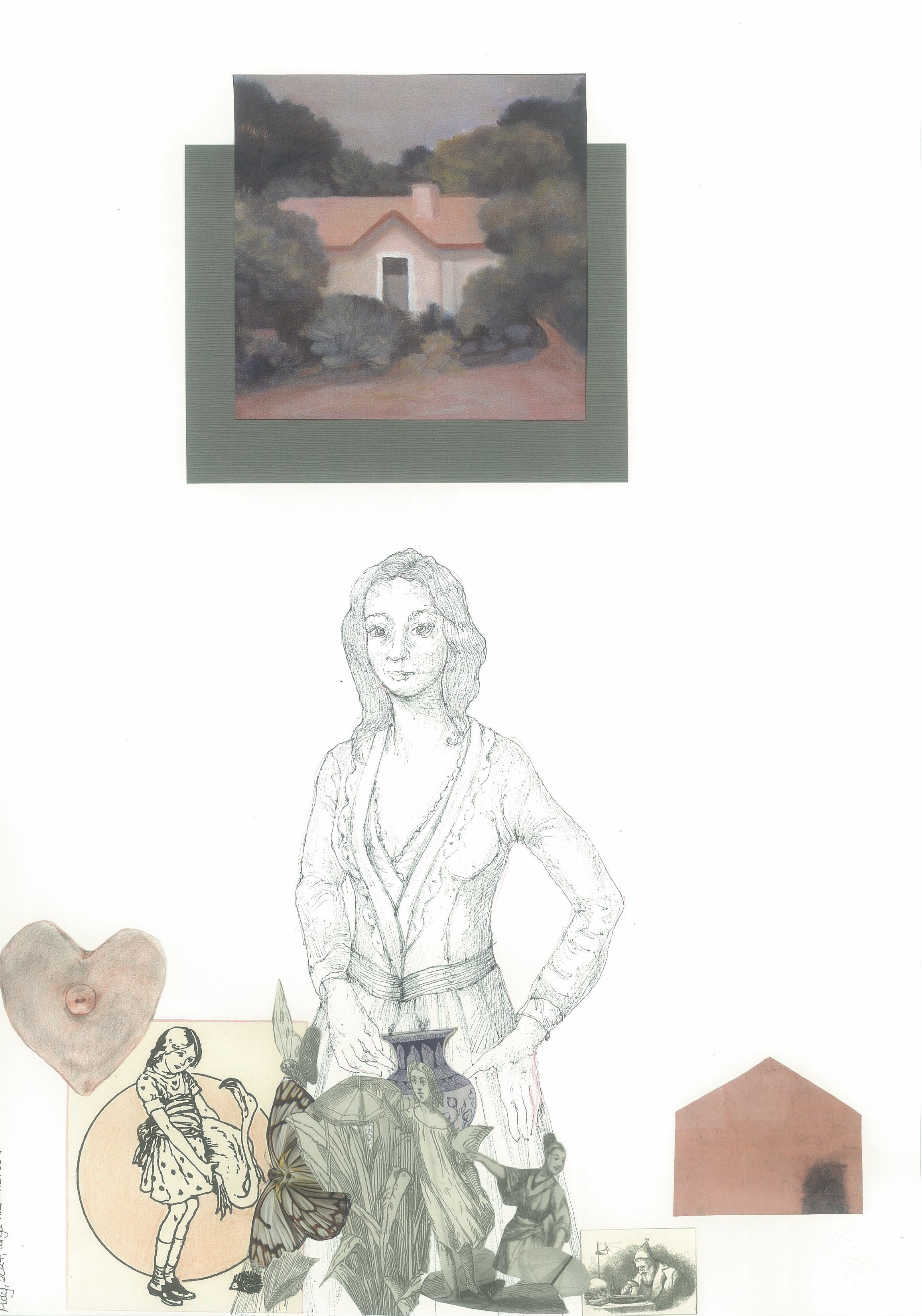
C. My artwork led to re reading some of Hans Christian Andersen’s stories and to the article I mentioned above: How 19th century fairy tales expressed anxieties about ecological devastation at: https://theconversation.com/how-19th-century-fairy-tales-expressed-anxieties-about-ecological-devastation-73137
The article explores how some of Hans Christian Andersen’s tales, like: A Drop of Water, The Daisy and the Flax, The Fir Tree and The Great Serpent, raised environmental concerns during an age of rapid industrialization. In the article it is suggested that by exploring the repercussions of an industrialised landscape, Andersen’s tales provided commentary on the threat to the English landscape and its population.
In Andersen’s tale, A Drop of Water, which is included in the collage part of my drawings today, according to the article, a sorcerer named Creep-and-Crawl examines an extract of ditch water, in which he has added a drop of blood from a witch, using a microscopic lens. He notices organisms that “hopped and jumped about, pulled one another and pecked one another”. Seeing the organism’s violent and seemingly bloody activity a colleague of his assumes that the creatures must be living in a capital city.
Laura Hood, the writer, comments that the Victorian public was equally horrified by the organisms that were hidden in its contaminated drinking water. This fear of water was well founded since “an antiquated sewage system directed London’s cesspools to the Thames, which was the capital’s water reserve. Chemicals from factories were also released into the river, spreading waterborne diseases such as typhoid, cholera, and dysentery.”
She concludes that “Today, with the steady rise of dystopian literature, eco fiction and climate change fiction (otherwise known as “cli fi”), we see similar artistic responses to environmental change which steer readers away from complacency. As authors seek to express the gravity and severity of ecological crises, their literature holds the potential to inspire radical change.”
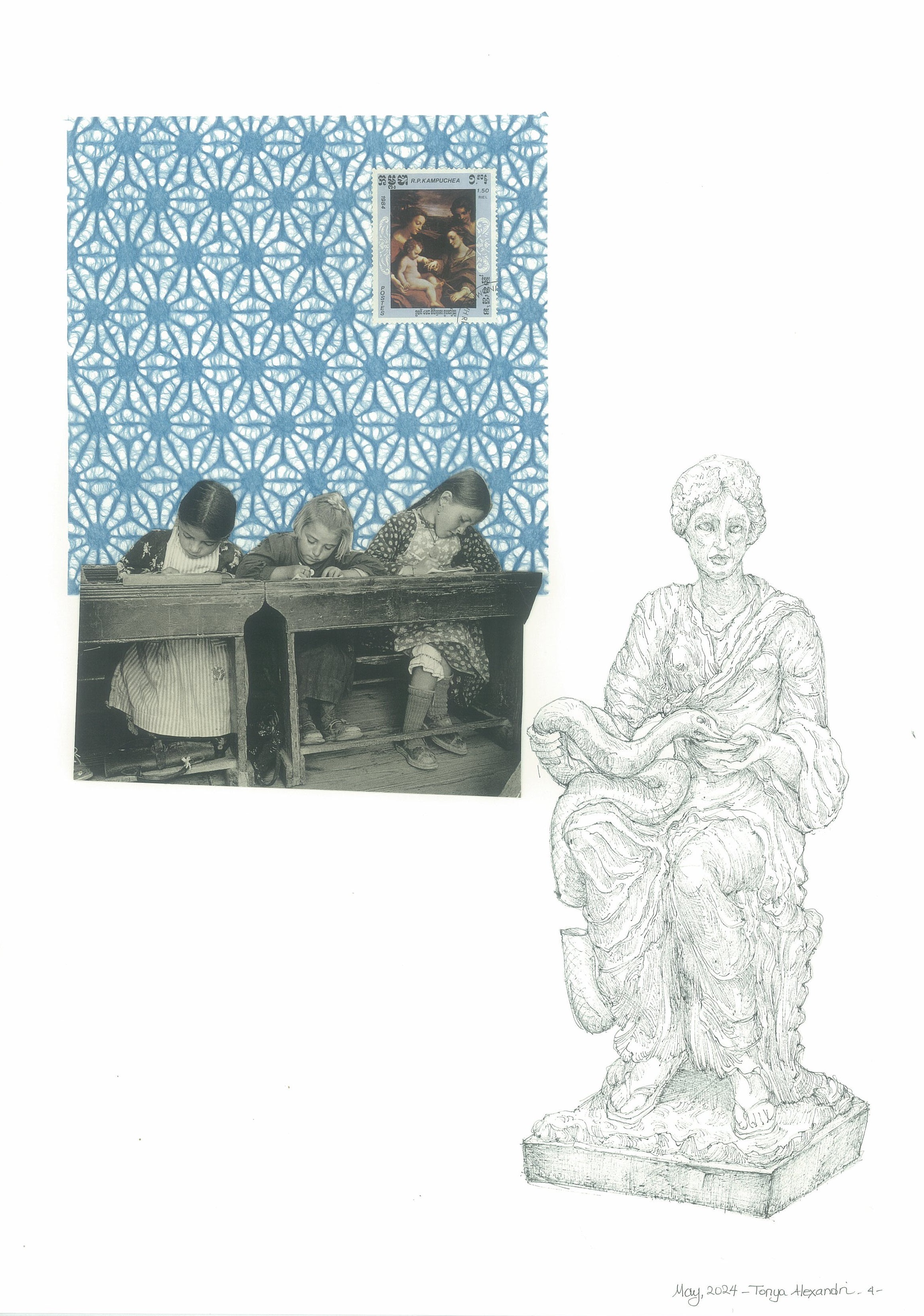
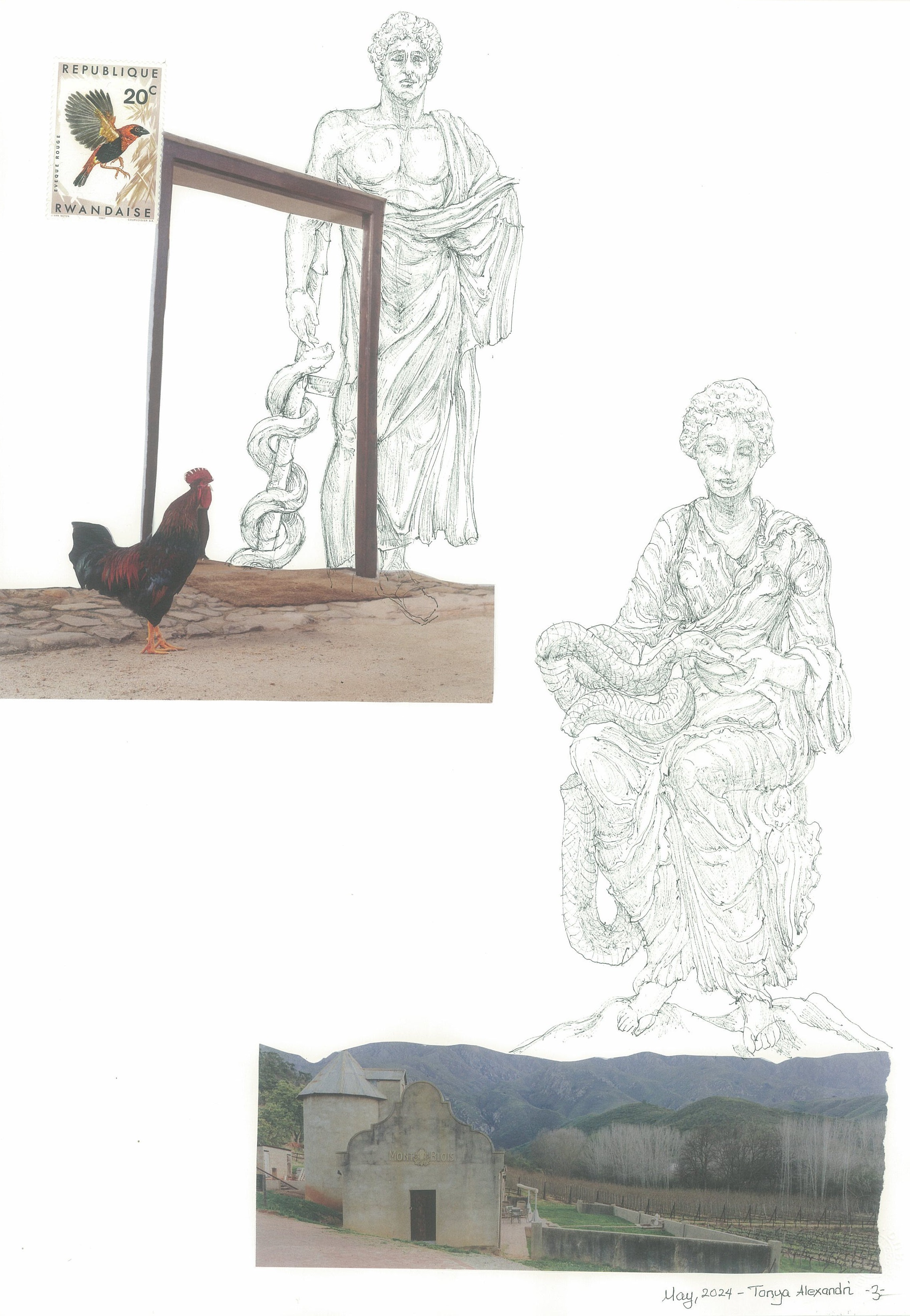
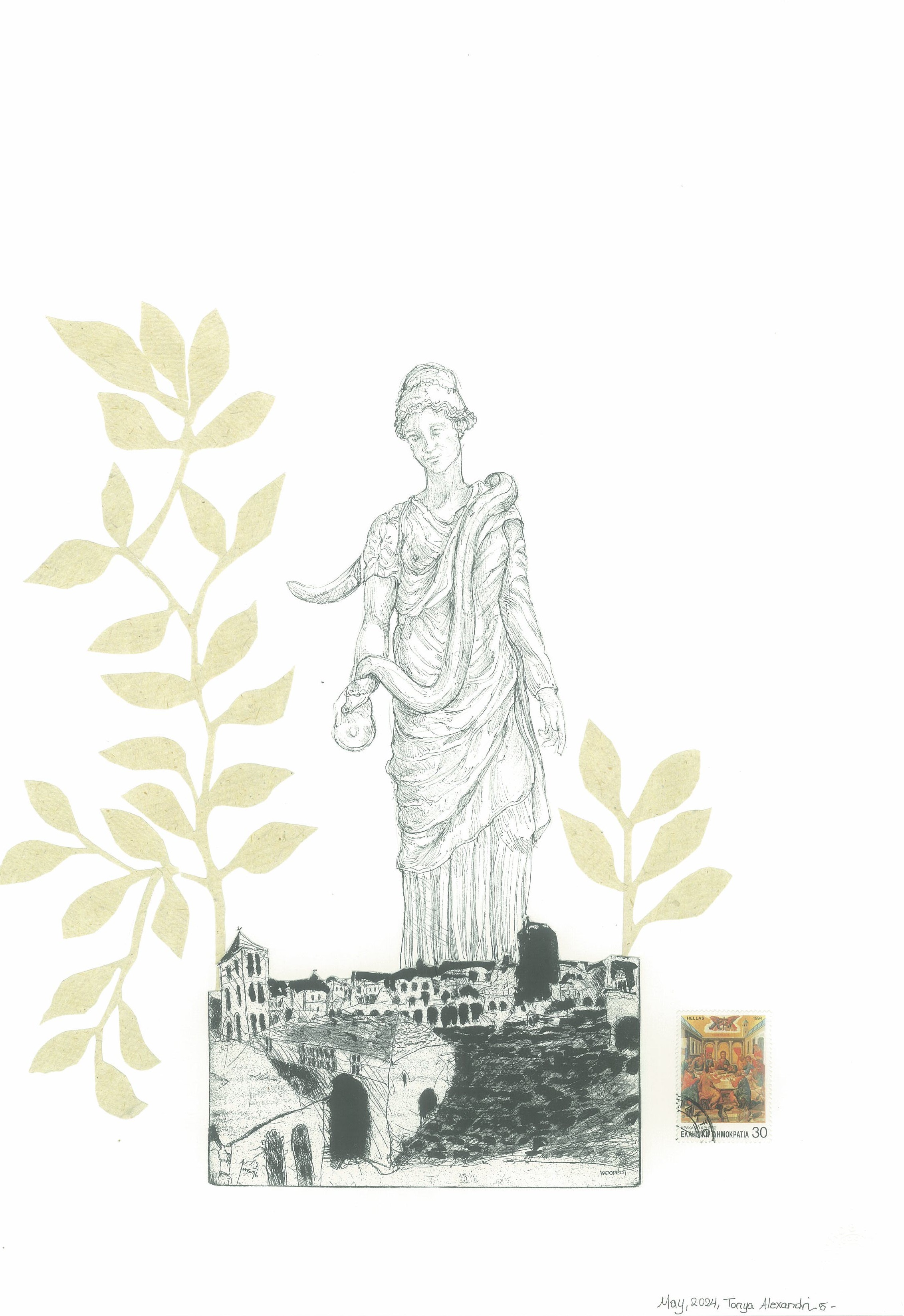
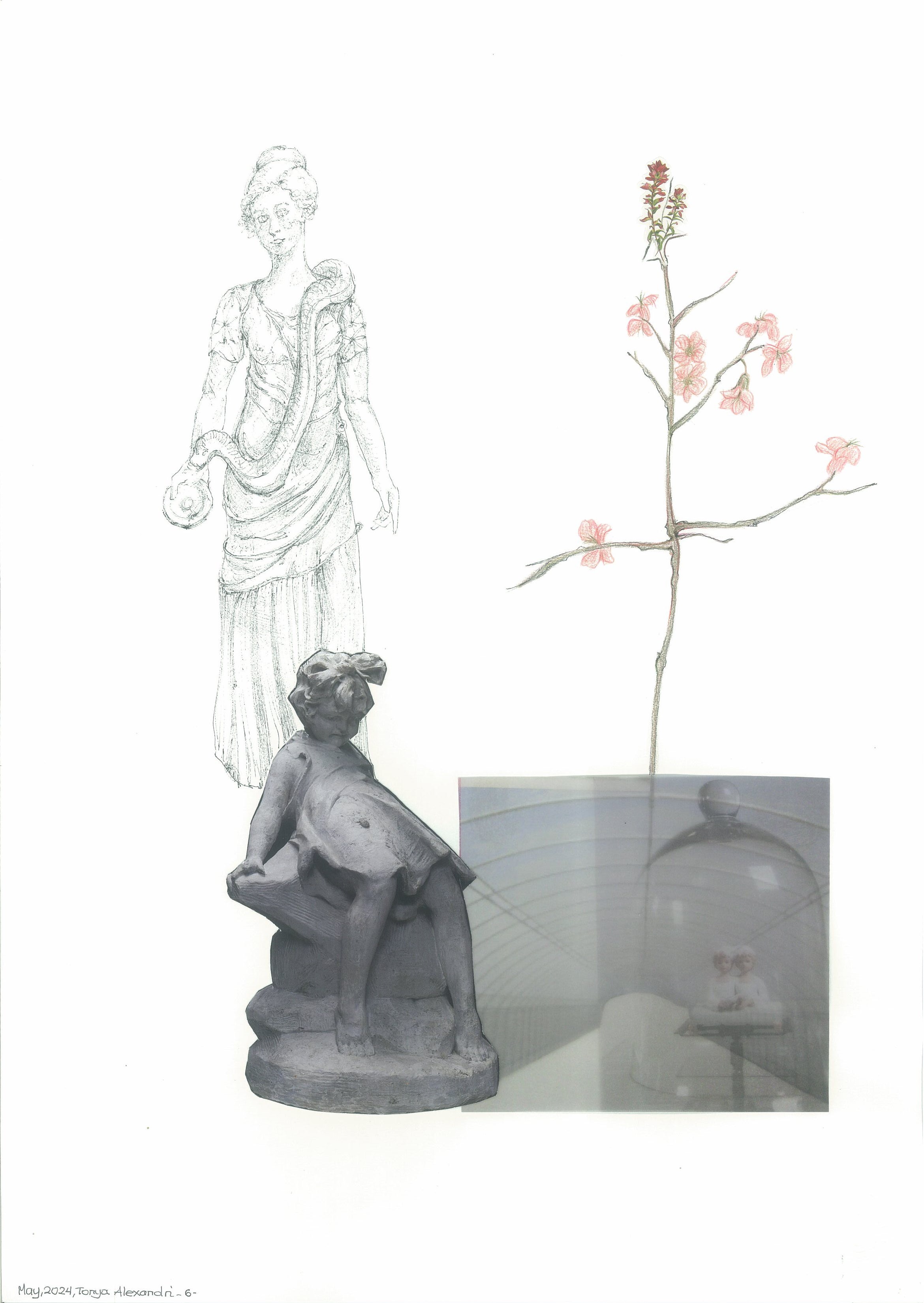
μ
